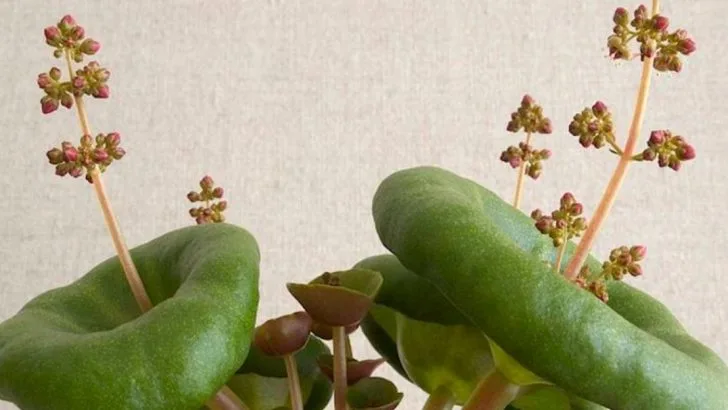Some plants don’t just grow—they make a statement. Unusual succulents offer more than hardy, low-maintenance greenery; their bold shapes, striking patterns, and architectural forms turn them into living sculptures that elevate any room.
From geometric rosettes to spiraling stems and textured surfaces, these succulents bring an artful touch to shelves, tabletops, and minimalist displays. They’re perfect for adding visual interest and a sense of wonder to your space—without the upkeep of traditional décor.
In this article, discover 10 unusual succulents that double as living sculptures—and learn how to style them to create captivating focal points in your home.
Lithops

Lithops, often resembling colorful pebbles scattered across the sandy ground, intrigue with their stone-like appearance. These succulents, native to southern Africa, have evolved to blend seamlessly with their environment, avoiding the attention of hungry herbivores.
Their patterned tops, which can mimic stones or cracks in the earth, are actually window-like structures that allow light to penetrate deeper into the leaf. Observing these little “living stones” often feels like discovering hidden treasures in a desert. Their slow growth and unique appearance make them a fascinating addition to any plant collection.
Euphorbia Tirucalli (Firesticks)

Euphorbia Tirucalli, commonly known as Firesticks, captivates with its fiery tones of red and orange, especially during the colder months. This striking succulent has slender, pencil-like branches that seem to glow with warmth.
Originating from Africa, Firesticks are drought-tolerant and thrive in sunny spots. They bring a touch of the exotic to gardens and homes, particularly when planted en masse. Their bold coloring and upright growth habit make them ideal for adding architectural interest to landscapes.
Aloe Polyphylla (Spiral Aloe)
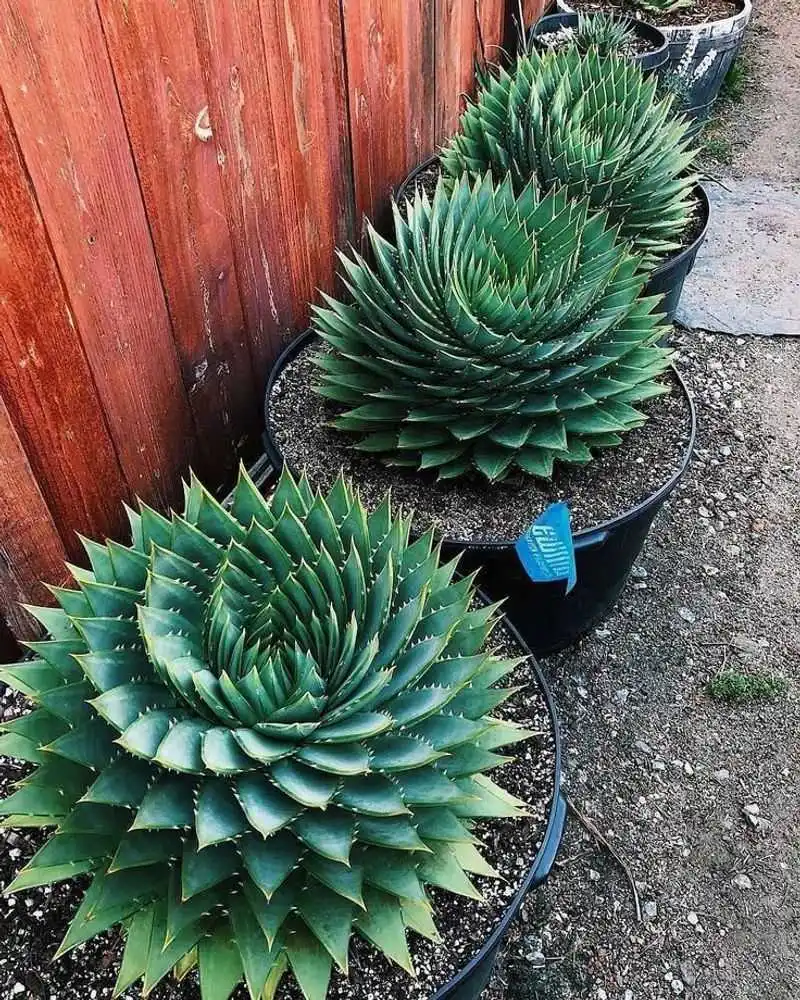
Aloe Polyphylla, or Spiral Aloe, is a marvel of natural symmetry. Its stunning spiral formation isn’t just visually striking; it’s a testament to the mathematical precision found in nature. The leaves unfold in perfect Fibonacci sequences, creating a mesmerizing whirl.
Hailing from the mountains of Lesotho, this aloe requires cool climates and well-draining soil to thrive. Its unique growth pattern and lush green hue make it a standout centerpiece in any succulent arrangement.
Crassula Umbella (Wine Cup)
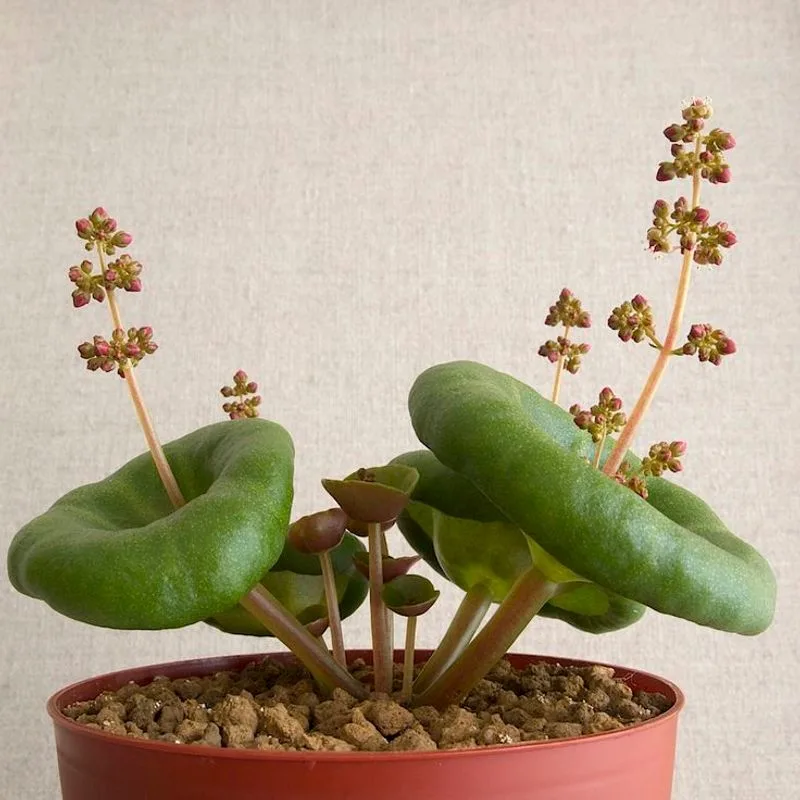
Crassula Umbella, affectionately known as Wine Cup, charms with its whimsical, cup-shaped leaves that seem to toast to the morning sun. These quirky succulents hail from South Africa, where they naturally form small, ground-hugging mats.
Their leaves collect dew, adding a sparkling touch to their already delightful appearance. Perfect for containers, these plants invite curiosity and admiration from all who encounter them. The Wine Cup’s playful form brings joy to any gardener seeking something out of the ordinary.
Senecio Rowleyanus (String of Pearls)
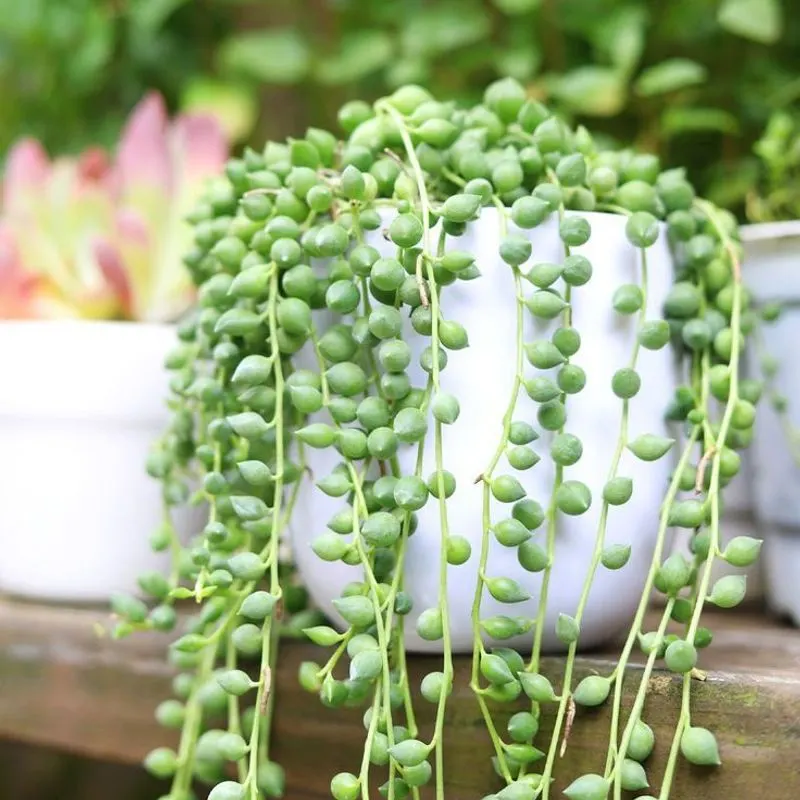
Senecio Rowleyanus, or String of Pearls, enchants with its cascading strands of bead-like leaves. Each “pearl” is a small, spherical leaf filled with water, an adaptation for survival in arid environments.
This succulent’s trailing nature makes it perfect for hanging baskets, where its lush, green strings can truly shine. Its delicate, understated beauty adds a touch of elegance to any room, evoking the charm of a beaded curtain swaying gently in the breeze.
Sedum Morganianum (Burro’s Tail)
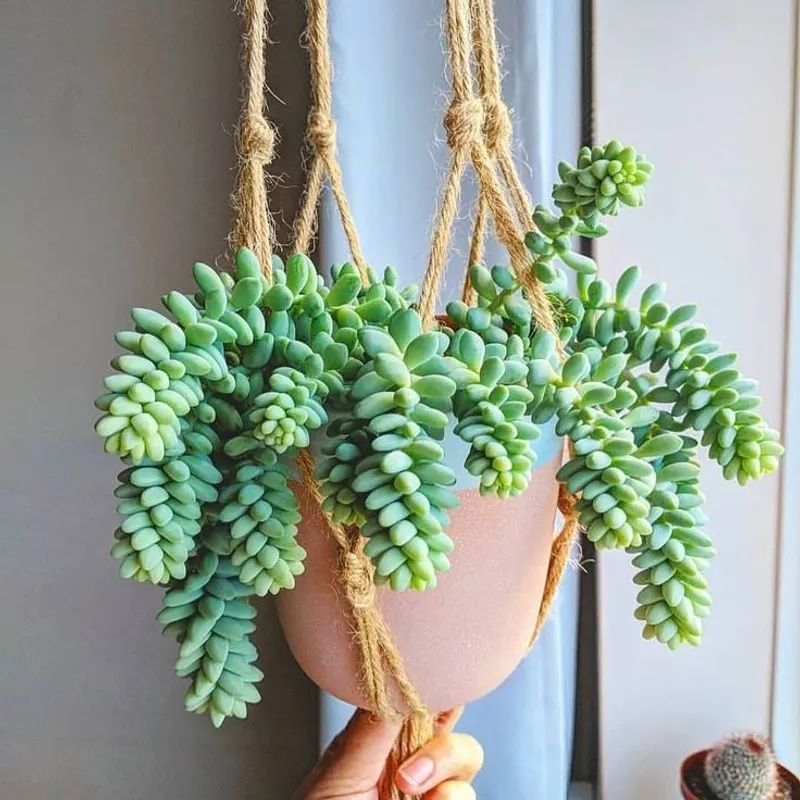
Sedum Morganianum, commonly referred to as Burro’s Tail, impresses with its thick, trailing stems covered in fleshy, blue-green leaves. Originating from southern Mexico, this succulent thrives in hanging baskets where its unique form can cascade freely.
The dense, overlapping leaves create a braided effect, reminiscent of a donkey’s tail, from which it derives its name. Its playful, cascading demeanor adds an element of whimsy to any indoor or outdoor space.
Aeonium Tabuliforme (Dinner Plate Aeonium)
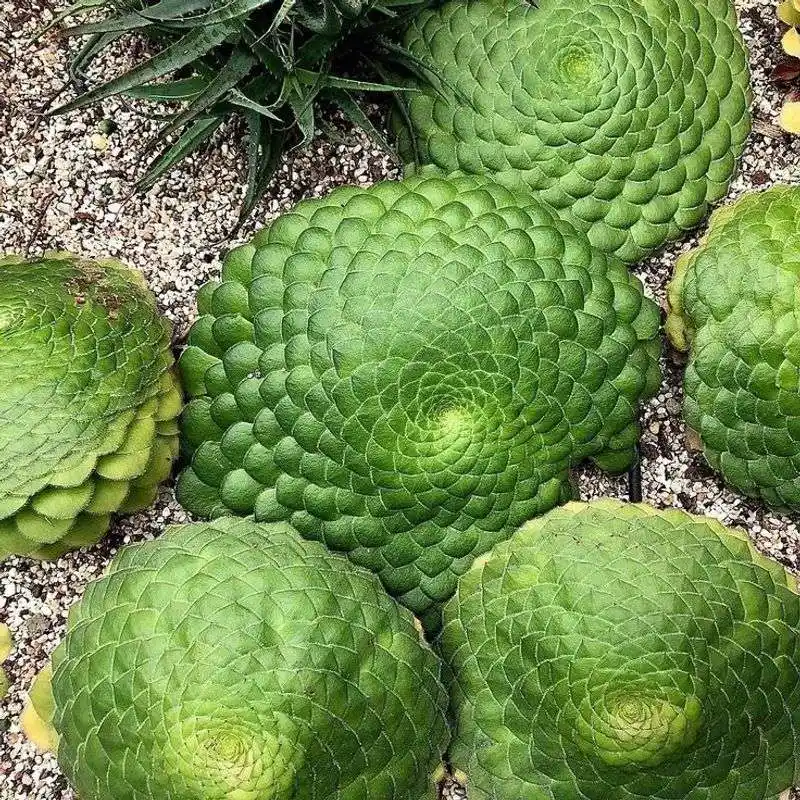
Aeonium Tabuliforme, known as the Dinner Plate Aeonium, fascinates with its large, flat rosette that can span up to two feet across. The rosette’s lush green leaves are arranged in a perfect circle, forming what looks like a living dinner plate.
Native to the Canary Islands, this succulent thrives in well-draining soil and coastal environments. Its striking appearance is sure to draw attention, adding structural elegance to any garden.
Kalanchoe Thyrsiflora (Paddle Plant)
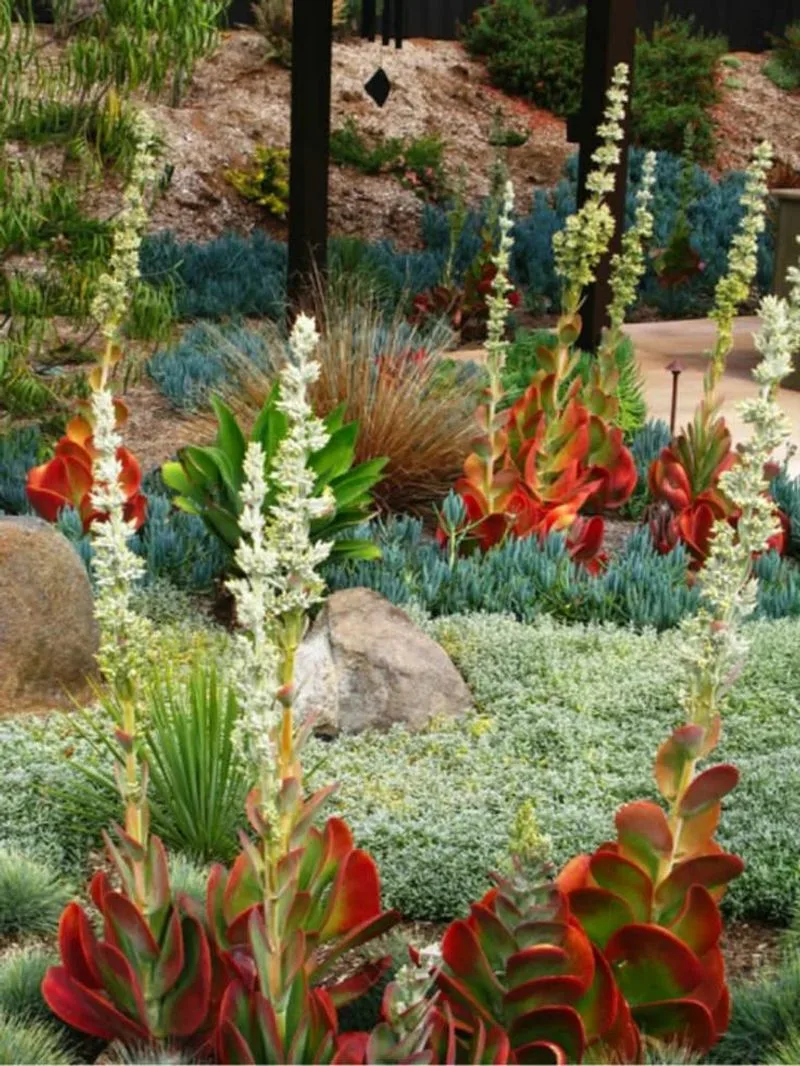
Kalanchoe Thyrsiflora, often called the Paddle Plant, captivates with its large, round leaves that blush with hues of red in the sun. These paddle-like leaves grow in a tight rosette, creating a bold, architectural statement.
Perfect for outdoor gardens, this succulent thrives in full sun and well-draining soil. Its dramatic foliage and vibrant color make it an excellent focal point, providing a burst of color and form to succulent collections.
Haworthia Cooperi
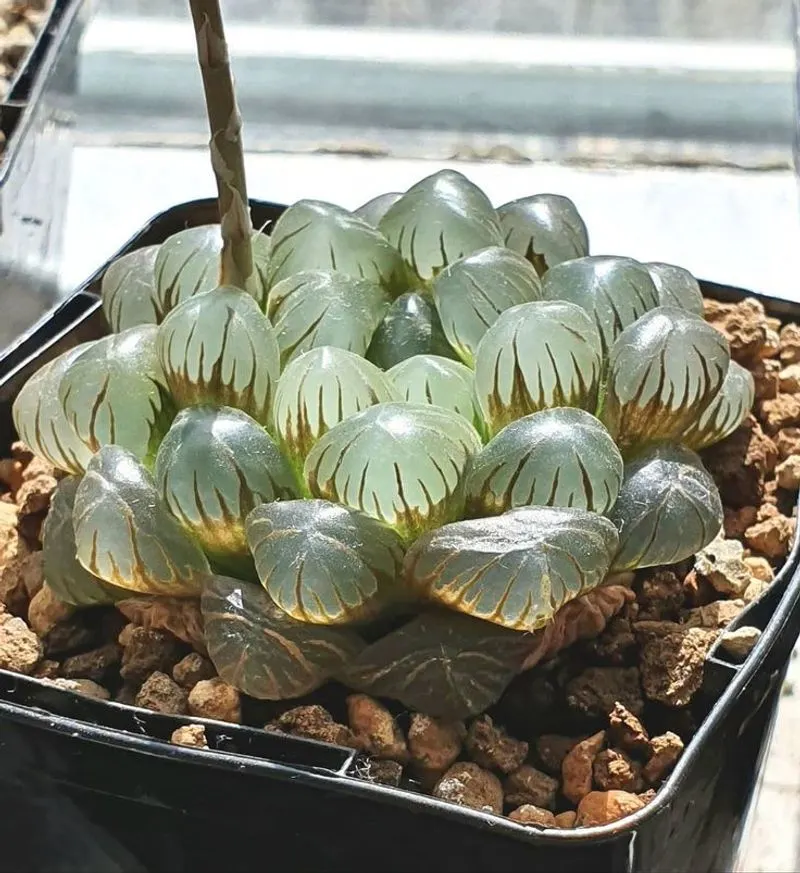
Haworthia Cooperi stands out with its translucent, fleshy leaves that almost appear to glow from within. Each leaf tip is clear, allowing light to pass through, creating an ethereal effect.
Originating from South Africa, this succulent prefers shaded areas, making it ideal for indoor collections. Its compact size and otherworldly appearance make it a conversation starter, intriguing all who observe its delicate beauty.
Echeveria ‘Black Prince’
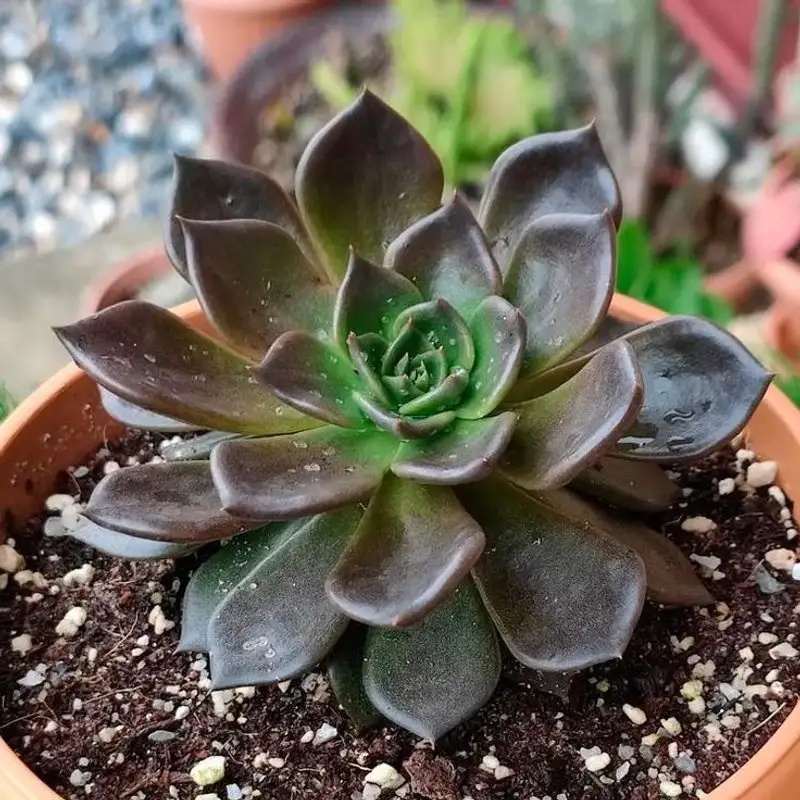
Echeveria ‘Black Prince’ commands attention with its dramatic, dark foliage. The deep, almost black leaves form a rosette, providing a striking contrast against lighter surroundings.
This succulent’s mysterious allure makes it a captivating choice for any plant enthusiast looking to add a touch of drama to their collection. It thrives in bright light and well-draining soil, enhancing its intense coloration and compact form.

